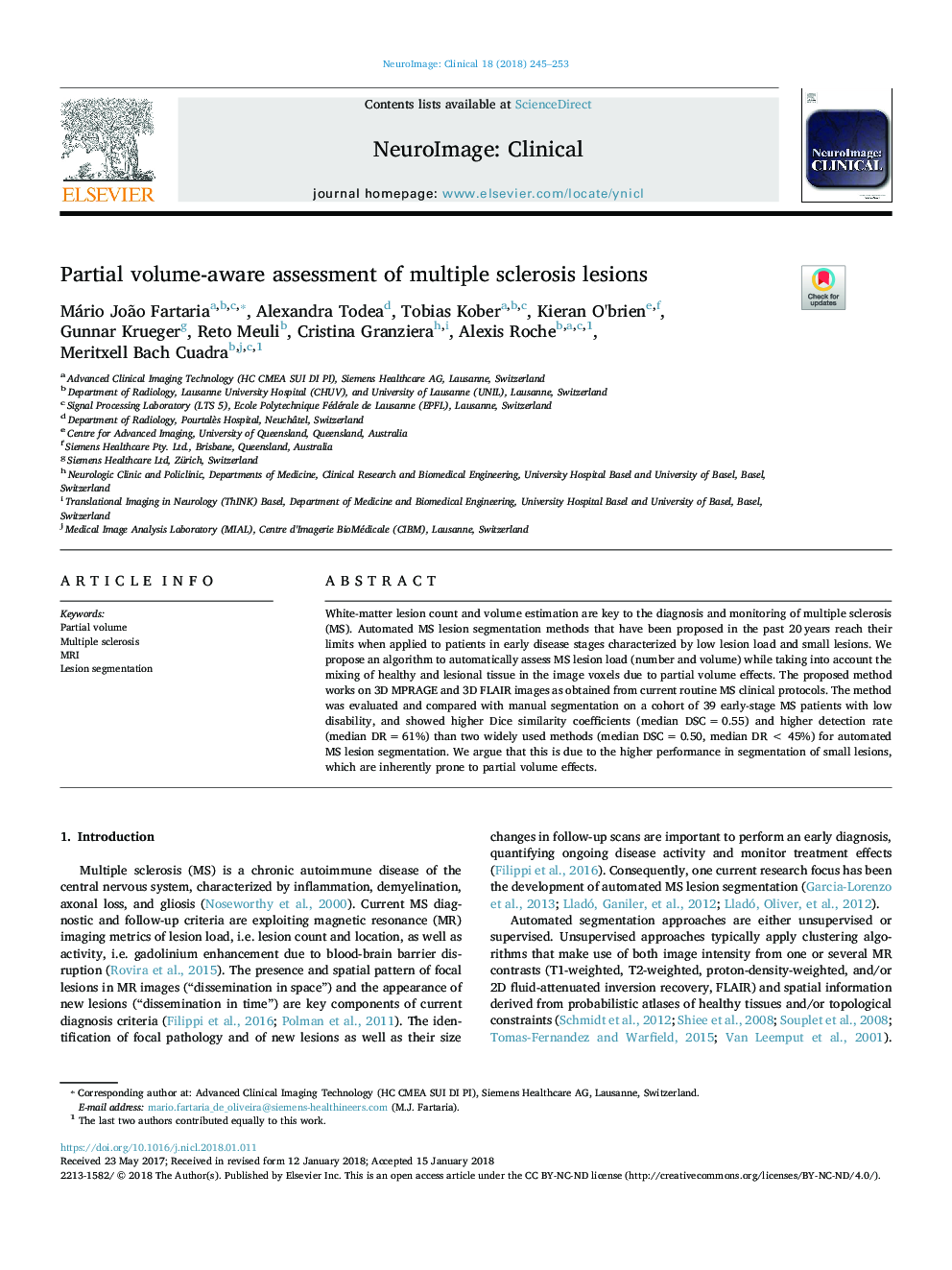| Article ID | Journal | Published Year | Pages | File Type |
|---|---|---|---|---|
| 8687801 | NeuroImage: Clinical | 2018 | 9 Pages |
Abstract
White-matter lesion count and volume estimation are key to the diagnosis and monitoring of multiple sclerosis (MS). Automated MS lesion segmentation methods that have been proposed in the past 20â¯years reach their limits when applied to patients in early disease stages characterized by low lesion load and small lesions. We propose an algorithm to automatically assess MS lesion load (number and volume) while taking into account the mixing of healthy and lesional tissue in the image voxels due to partial volume effects. The proposed method works on 3D MPRAGE and 3D FLAIR images as obtained from current routine MS clinical protocols. The method was evaluated and compared with manual segmentation on a cohort of 39 early-stage MS patients with low disability, and showed higher Dice similarity coefficients (median DSCâ¯=â¯0.55) and higher detection rate (median DRâ¯=â¯61%) than two widely used methods (median DSCâ¯=â¯0.50, median DRâ¯<â¯45%) for automated MS lesion segmentation. We argue that this is due to the higher performance in segmentation of small lesions, which are inherently prone to partial volume effects.
Related Topics
Life Sciences
Neuroscience
Biological Psychiatry
Authors
Mário João Fartaria, Alexandra Todea, Tobias Kober, Kieran O'brien, Gunnar Krueger, Reto Meuli, Cristina Granziera, Alexis Roche, Meritxell Bach Cuadra,
